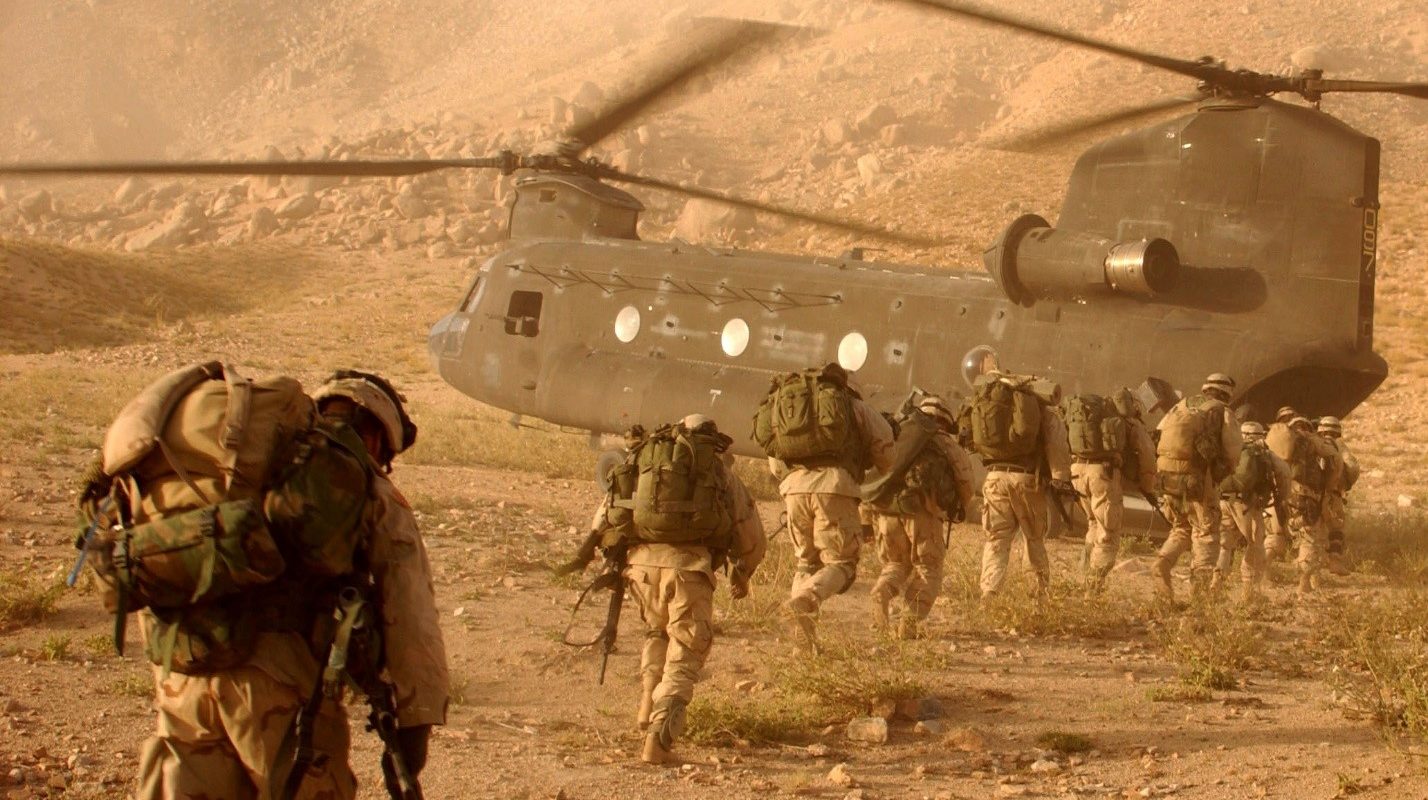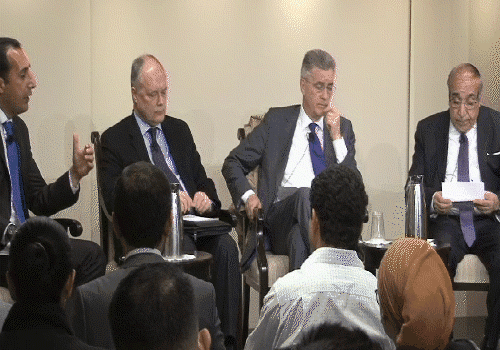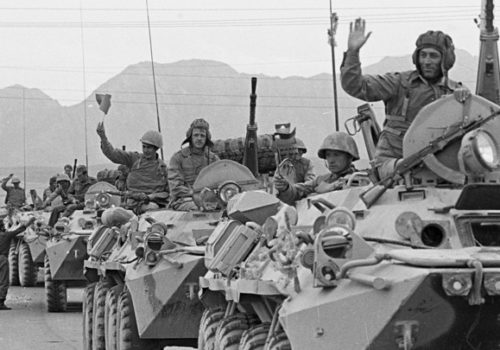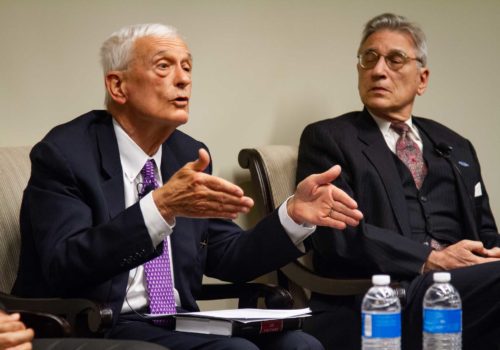“The Taliban will run Afghanistan’s future government and encourage other Afghans to join them. The Afghan national army will collapse, and the Taliban will form another from scratch.” That was the declaration of the militant group’s political leader Abbas Stanikzai about the future of the country in a recent video interview from Qatar.
Such bombast is hardly unusual for a group that terrorized the population during its rule before the US-led invasion in 2001. But it’s important to note now because the United States is currently engaged in the first viable peace talks with the Taliban to end 17 years of costly war and bring American troops home. At the same time, Russia organized a so-called inter-Afghan peace conference last month involving political leaders and prominent Taliban officials.
The Taliban has been fighting the Afghan government and international forces in the country for almost two decades. But with developments on the ground now fast-moving, can the Taliban really help bring peace?
Here are some points to keep in mind:
1. Pakistan won’t sit on the sidelines. Under intense international pressure, Islamabad used its influence with the Taliban to invite the group to negotiate with the United States. But as a key player in any future political settlement, Pakistan is wary of any possible such agreement.
Pakistan, which has long provided safe havens for the Taliban and other terrorist groups, does not want a lasting peace in Afghanistan for several reasons. Although Islamabad is currently facing fierce criticism from US President Donald Trump and the suspension of American financial support, it has received $33 billion from Washington for fighting terrorism over the past 17 years. If the Afghan conflict were to end, the prospect for resuming the major cash flow would significantly decrease.
Pakistan is also fearful of its eastern neighbor and bitter rival India and does not want to see a burgeoning peacetime relationship between Delhi and Kabul.
With peace in Afghanistan, ethnic Pashtuns on either side of the Durand line (the border between Afghanistan and Pakistan drawn up by the departing British in 1919 that Afghans never recognized) would almost certainly push for the unification of their group, which would create a major new problem for Pakistan.
Pakistan has also built the 19th-century Afghan town of Gwadar into a major Arabian Sea port. If Afghanistan’s security were to stabilize, Kabul could raise the issue of its return.
Islamabad has long sought to bring down legitimate governments in Afghanistan, part of an attempt to ensure Afghanistan remains politically dependent on Pakistan. The rebel Mujahidin overthrew the Moscow-backed government of Mohammad Najibullah with Pakistan’s support in 1992. Later, Islamabad backed the Taliban’s toppling of Burhan Ul Din Rabani’s administration in 1996. Pakistan’s intelligence officials then covertly approached the anti-Taliban Northern Alliance, encouraging it to rise up against the majority ethnic Pashtun in power. Although Pakistan promised an unspecified amount of support, the offer was rejected by the Jamait-e-Islami Party, a Northern Alliance member. Currently, Islamabad is worried about Afghan President Ashraf Ghani’s strategic economic plan for sustainability by developing Afghanistan into a crossroads for global trade.
2. The Islamic State Khorasan (ISK)—a branch of the militant group active in Afghanistan and Pakistan—would replace the Taliban. Washington says 20 different terrorist groups are active in Pakistan and Afghanistan. Ashraf Ghani has also said his government is battling 20 terrorist factions.
Among them, ISK poses the greatest threat to stability. It is stronger than the Taliban and has carried out deadly attacks in the country.
If the Taliban puts down its weapons to join the political process, a handful of fighters would surely turn their backs on a peace deal. ISK would take advantage by recruiting more fighters from their ranks.
ISK not only wants to expel foreign forces from Afghanistan but is fighting to expand in the region. ISK is also believed to enjoy safe haven in Pakistan, and Islamabad could potentially shift its support to the group from the Taliban.
3. The Taliban continues to promote a strongly conservative ideology that would threaten basic individual liberties. The group was formed in the 1990s with a mission of imposing Sharia law in Afghanistan. It now believes it has essentially defeated the US-led coalition that invaded after the September 11 attacks, and that no single other group exists inside the country able to challenge its authority. Many Afghans think it would be impossible to ensure a newly enfranchised Taliban would respect and uphold the rights of women, freedom of speech and otherwise behave differently than in the past.
4. Civil war. No peace agreement can bring real and sustainable peace to Afghanistan unless the country maintains a strong national army to enforce it. When Mujahidin leaders who fought the Soviet occupation proclaimed a new government in 1992, they concluded a power-sharing agreement. Nevertheless, infighting among the groups led to a resumption of civil war and a vast number of deaths among the population. Millions more were forced out of their homes, becoming internally displaced or migrating to other countries.
The current jihadi leaders took an oath in 1993 pledging to end infighting among each another. However, they continue to fight one other.
Only a strong national army would be able to guarantee some measure of peace necessary for helping address Afghanistan’s many challenges. To sustain stability, the Afghan security forces must be given more power and authority. To avoid the reoccurrence of civil war, a certain number of international troops must also remain on Afghan soil. Otherwise, the negotiations in Qatar and Moscow will produce no positive results.




